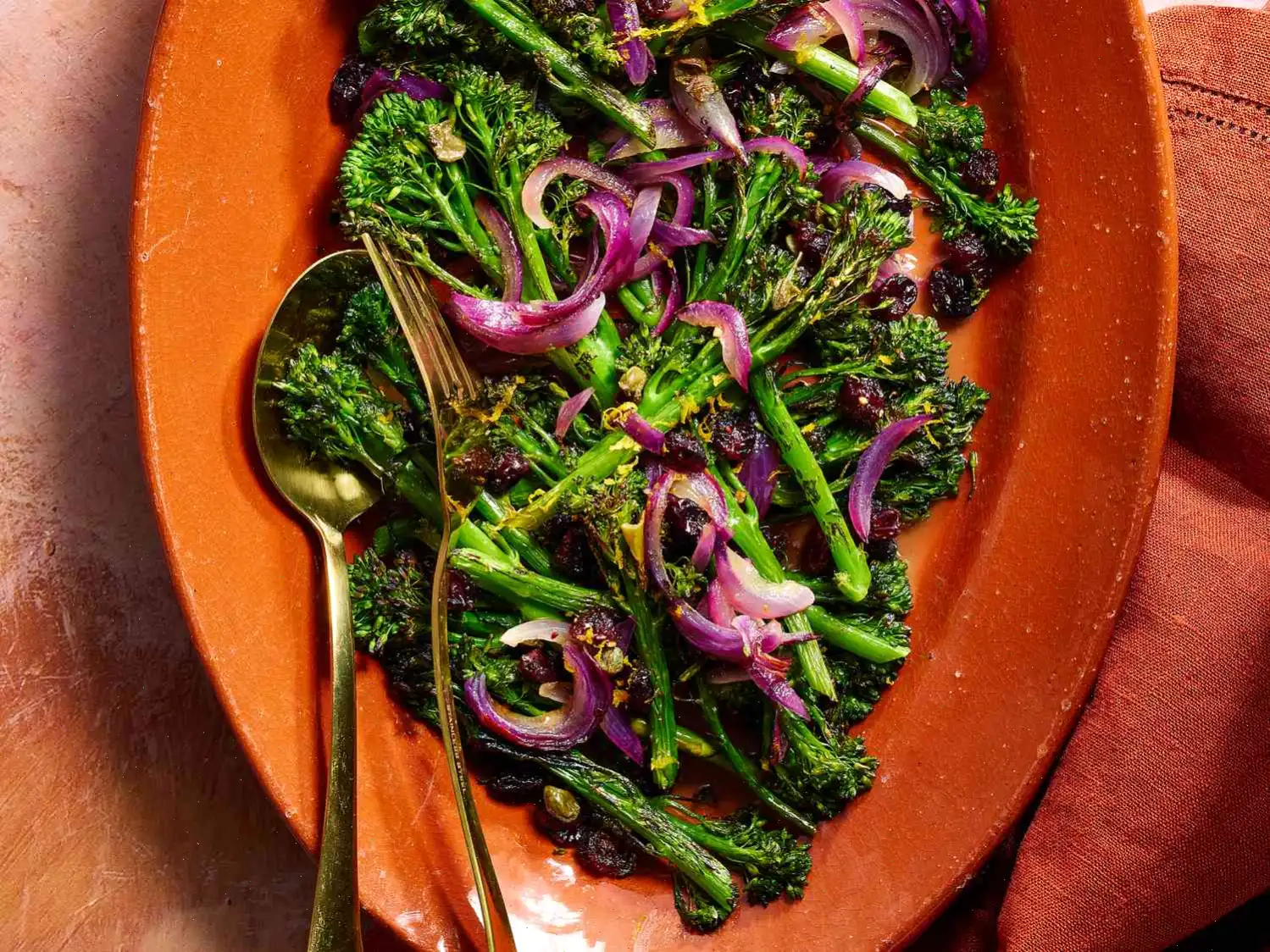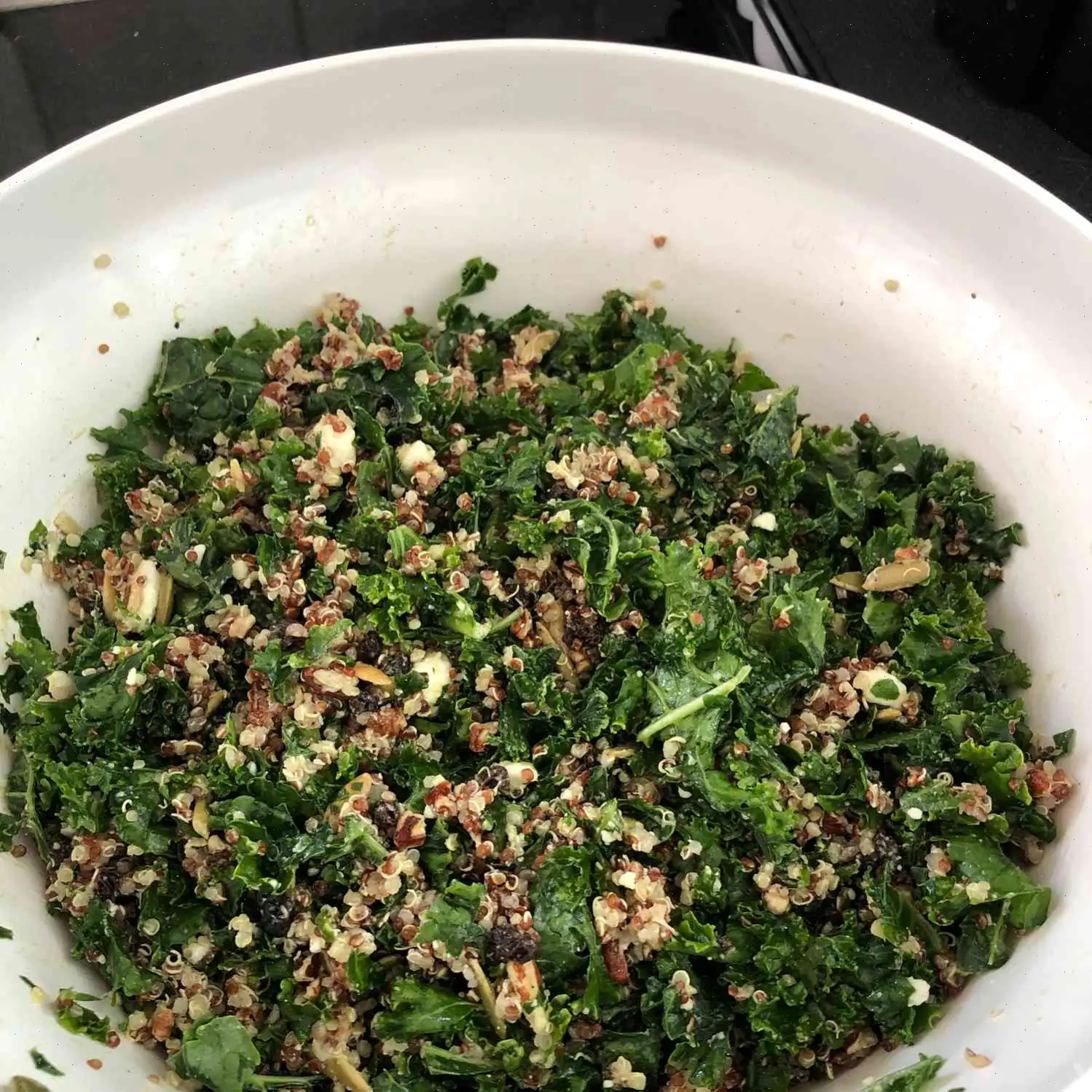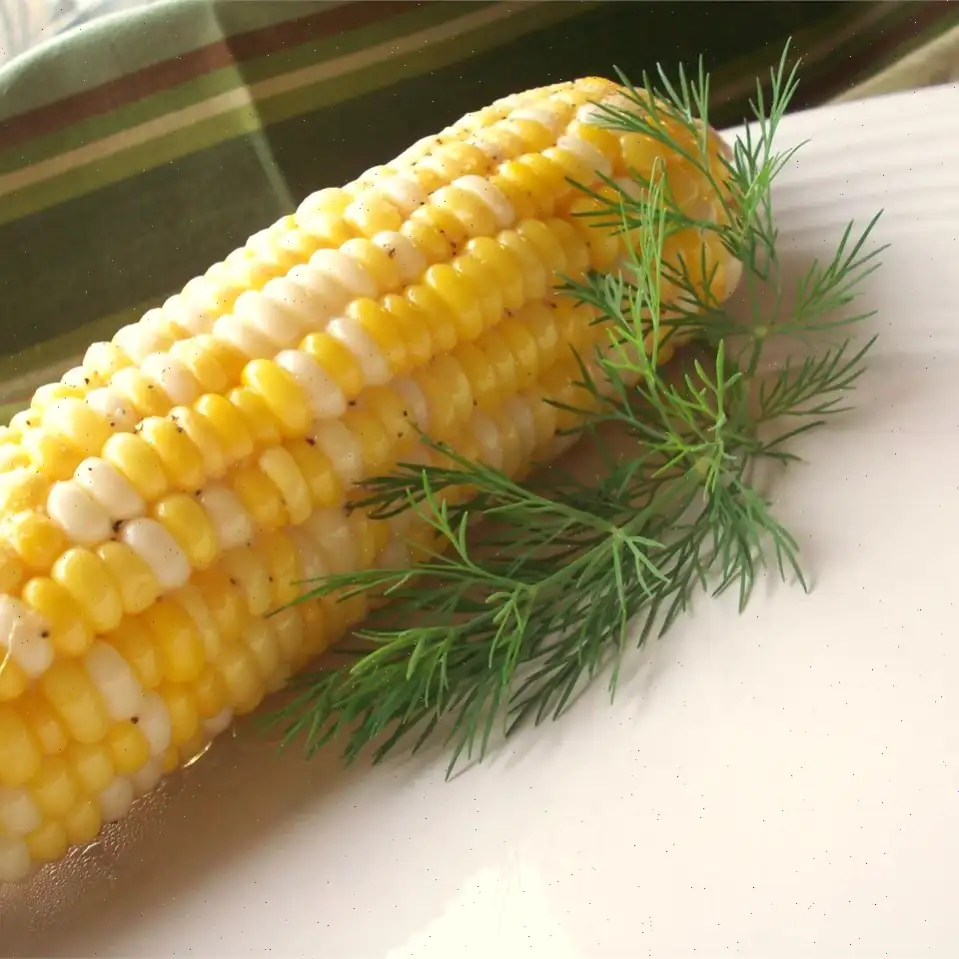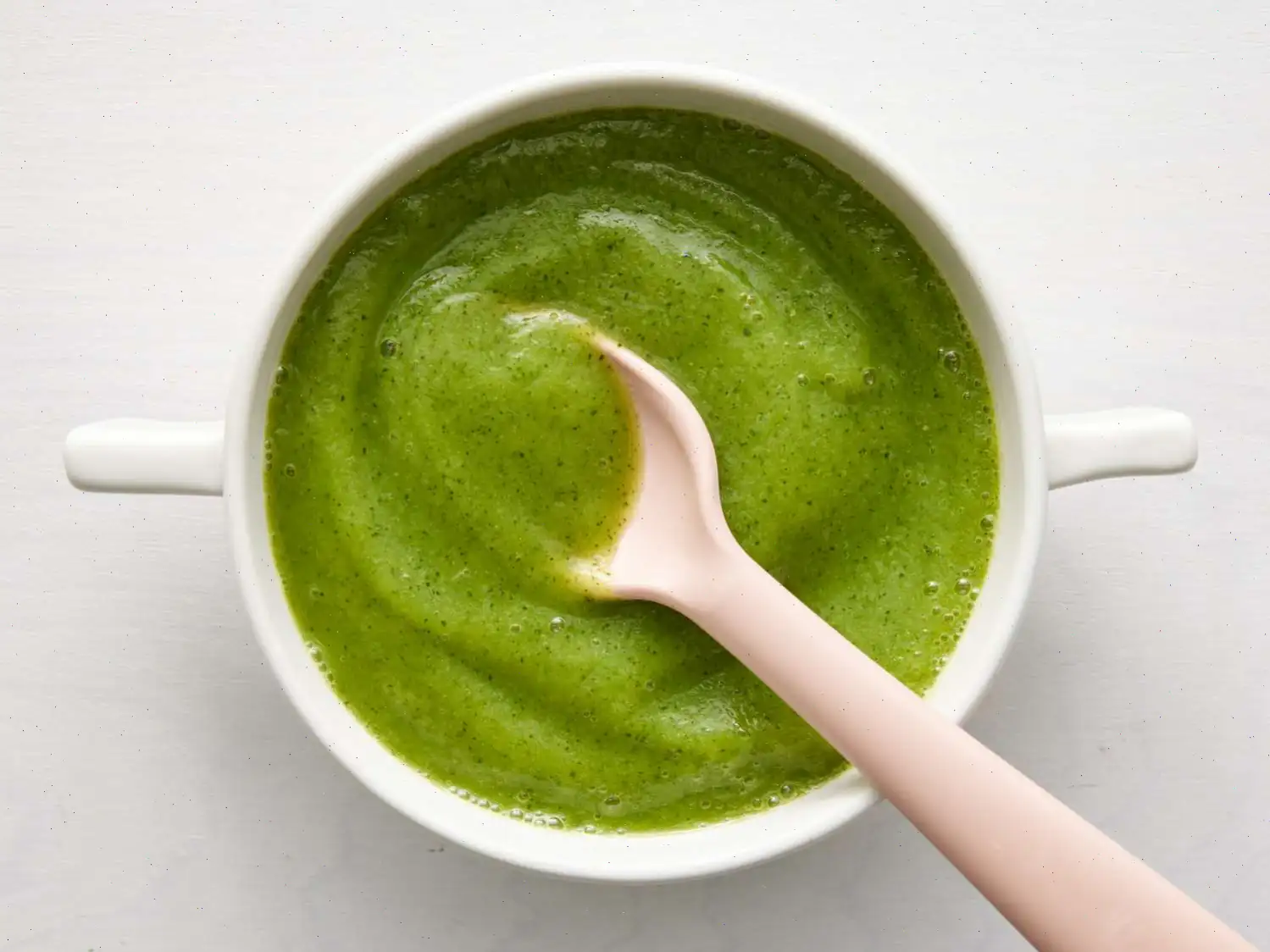
Blistered Broccolini with Cranberries and Capers Recipe
Broccolini with Orange-Cranberry Glaze
Ingredients
- 1/4 cup dried cranberries
- 1/4 cup fresh orange juice
- 1 pound broccolini
- 1/2 cup thinly sliced red onion
- 2 tablespoons olive oil
- 1 tablespoon capers
- 1/2 teaspoon freshly ground black pepper
- 1/4 teaspoon salt
- 1 teaspoon orange zest
Directions
Step 1: Set the oven rack about 6 inches from the heat source and preheat the broiler.
Step 2: In a small bowl, microwave the dried cranberries and orange juice on High for about 25 seconds, or until the cranberries are plump. Drain the cranberries, but keep the juice aside.
Step 3: On a 10x15-inch rimmed baking sheet lined with foil, toss the cranberries, broccolini, red onion, olive oil, capers, black pepper, and salt together. Spread the mixture into an even layer.
Step 4: Broil the ingredients for about 10 minutes, stirring halfway through, until the broccolini is blistered and tender.
Step 5: Toss the broccolini mixture with the reserved orange juice and orange zest just before serving.
Nutrition Facts (per serving)
- Calories: 146
- Total Fat: 8g (10% Daily Value)
- Saturated Fat: 1g (5% Daily Value)
- Cholesterol: 0mg (0% Daily Value)
- Sodium: 217mg (9% Daily Value)
- Total Carbohydrate: 20g (7% Daily Value)
- Dietary Fiber: 5g (16% Daily Value)
- Total Sugars: 11g
- Protein: 3g (6% Daily Value)
- Vitamin C: 69mg (76% Daily Value)
- Calcium: 82mg (6% Daily Value)
- Iron: 1mg (5% Daily Value)
- Potassium: 407mg (9% Daily Value)
History and Origins: Broccolini, a hybrid vegetable that combines broccoli and Chinese kale, was first developed in Japan in the 1990s. It was created to offer a milder, more delicate alternative to traditional broccoli. The addition of cranberries and capers in this dish is a testament to the growing trend of incorporating sweet, tangy, and savory flavors in modern American cuisine. This combination reflects the fusion of Italian and Mediterranean influences with classic American ingredients, creating a refreshing and vibrant side dish.
Regional Variations: While broccolini is commonly used in various parts of the world, the combination of cranberries and capers with it is more commonly found in American kitchens. The dish reflects the innovation of contemporary American chefs who enjoy experimenting with bold flavors. In some regions of the U.S., such as the Northeast, cranberries are a staple in many dishes, and they pair perfectly with the broccolinis slight bitterness, creating a balanced and exciting flavor profile.
Differences from Similar Dishes: Blistered Broccolini with Cranberries and Capers differs from more traditional vegetable side dishes in several ways. Unlike typical roasted or sauted broccoli dishes, broccolini is broiled, which gives it a unique crispy, slightly charred texture. The cranberries add a burst of sweetness, while the capers contribute a salty, briny flavor that is rare in conventional vegetable sides. Additionally, the fresh orange juice and zest in the dish provide a citrusy note, making this recipe stand out from other similar vegetable-based dishes.
Where Its Typically Served: This dish is often served as a side dish for various occasions, including holiday dinners, casual weeknight meals, or family gatherings. Its colorful presentation and unique combination of flavors make it a popular choice for special occasions like Thanksgiving or Christmas. It pairs beautifully with roasted meats such as turkey, chicken, or lamb, but can also serve as a vibrant, vegetarian main course when paired with grains like quinoa or couscous.
Interesting Facts: One of the most interesting facts about broccolini is that it is often mistaken for baby broccoli, but it is actually a distinct vegetable. The tender stems and delicate florets are not just a treat for the taste budsthey are also packed with nutrients like vitamins A and C, fiber, and antioxidants. Capers, the tiny pickled flower buds used in this dish, have been a key ingredient in Mediterranean cuisine for centuries. They are prized for their tangy flavor and have been used to preserve the flavors of summer vegetables in ancient times. This dish is not only a celebration of flavor but also an example of how diverse and rich culinary traditions can come together in one dish.








